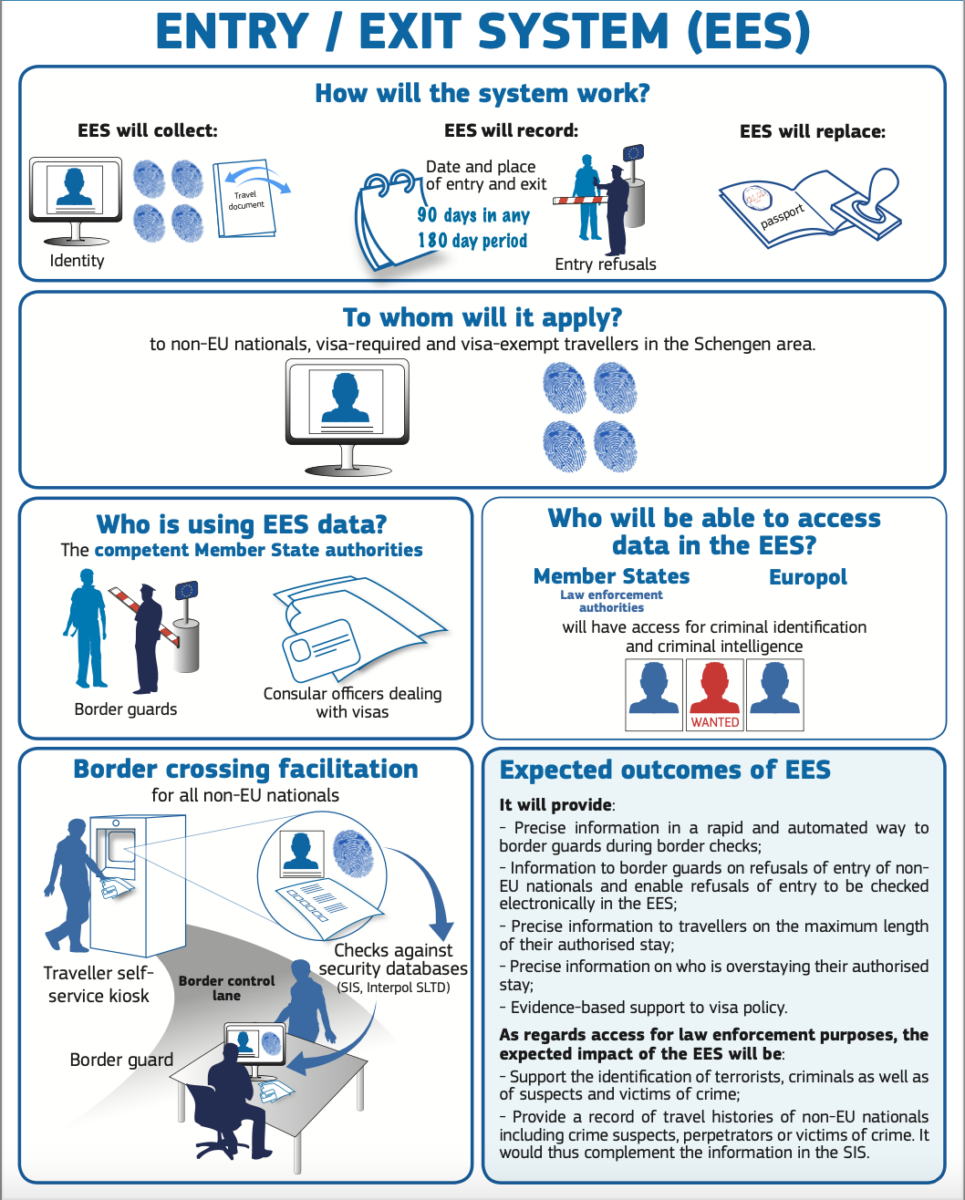Europe’s taking new steps to lay the smackdown on its border security.
Launching in May of 2023, all foreigners arriving from non-EU countries of origin, yes, that even means you, Americans, are required to have their photos taken and register their fingerprints, which are then stored in a digital shared database.
But despite strong support backing the new strategy as a more effective way to identify and monitor persons entering and exiting the EU, many have expressed concerns about privacy protections and are anticipating the upcoming rollout as only an irritable inconvenience for future travel.
How it Works
Say goodbye to passport stamps and visa stickers, the European Union’s Entry-Exit System referred to as EES, is going digital.
Here’s the scoop: Upon traveling to any destination in Europe beginning in May of next year, in a one-time procedure, non-European nationals and visa-required/exempt travelers in the Schengen area will need to provide:
- Full name
- Entry/exit dates
- An acceptable travel document
- Captured facial image
- Submit four fingerprints
Collected data will be securely stored by Frontex, the European Border, and Coast Guard Agency, and used only by border guards, airline carriers, consular officers, law enforcement authorities, and Europol.

The Benefits of EES
According to the European Commission, the proposal for EES, which was adopted on November 20, 2017, and implemented in December 2017, will assist the European Agenda on Security and European Agenda on Migration in their efforts to better manage Europe’s borders and prevent crime and terrorism from crossing into European nations.
This means, for instance, that all-too-common cases of irregular migration in Europe like visa overstay, identity fraud, and incoming persons that may pose a threat to the safety and well-being of European citizens, can be detected and monitored more efficiently using information and biometric data stored in a digital IT system versus physical documentation.
Furthermore, the implantation of the new EES system is set to benefit the ever-increasing number of travelers to the EU with its faster and more convenient digitized entry/exit process.

Dismay Using the EES
In spite of the push for a modernized digital border policy, with EES soon set to unravel in 2023, growing concerns have not only arisen about the inconveniences of implementing the new system, but also in regard to the handling of travelers’ private information and biometric data.
Under the new digitized EES process, travelers are anticipating wait times to increase as data is collected, especially during holidays and peak travel seasons like summer months. Technical glitches are also a major concern, given that enactment of the new EES was previously delayed for the same reason.
Additionally, EES has faced backlash over for how travelers’ biometric data is stored, how it is used, who will be using it, and most importantly, if the EU’s collecting of data is an actual violation of fundamental data protection laws.

The World Will Have to Wait
The world will just have to wait for Europe’s digital entry-exit system to take effect in May of 2023 before passing judgment on its capabilities, overall efficiency, and use of data protection laws.
Trials of EES using self-service kiosks and seamless corridors have already kicked off in places like Iceland and Bulgaria, and surely improvements in key areas like time, quality control, and proficiency, have been added to enhance the system.
In the meantime, there’s no shame in collecting EU stamps in your passport. After all, they might be hot commodities in the travel memorabilia department by this time next year!














